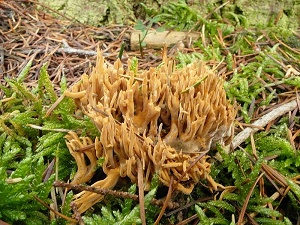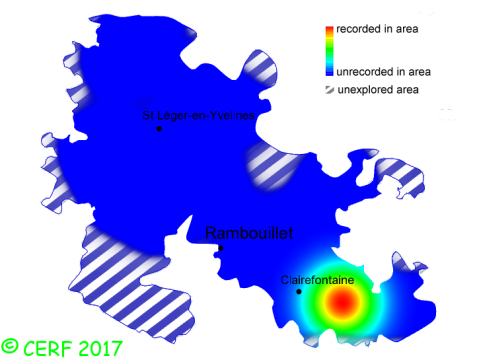| Ramaria eumorpha (P. Karst.) Corner |
|
|
|
|
|
|
The fruiting body is shaped like a branched shrub, with cylindrical branches, ochre yellowish, without stem, but with a slender white trunk with white mycelial strands at the base. The fertile surface is smooth. It grows on the ground, in coniferous woods, sometimes also with deciduous trees, with spruce, pine, birch, oaks. The fruiting period takes place from August to October.
Chemical tests : white flesh turning reddish-orange when in contact with potash (KOH). Distinctive features : branched, with branches not turning brown when touched; bright yellow tips Ramaria eumorpha is rare and confined in the forest of Rambouillet, and is quite rare, more generally speaking . | ||
|
page updated on 14/01/18

